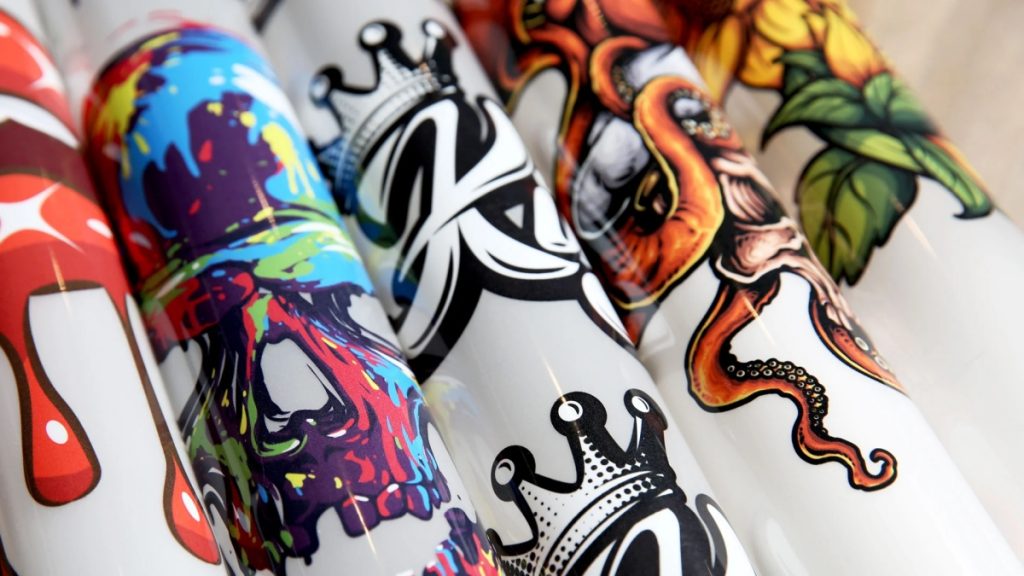Direct-to-Film (DTF) transfers have emerged as a revolutionary method, offering flexibility, vibrancy, and durability in textile printing space.
DTF transfers provide an exciting alternative to traditional methods like screen printing and Direct-to-Garment (DTG) printing whether you are new to printing or an experienced professional looking to explore new techniques.
Even so, this guide will walk you through everything you need to know about DTF transfers, from what they are to how they can be applied in various industries.
What Are DTF Transfers?
Contents
DTF transfers are a cutting-edge method of applying designs to textiles. Unlike traditional methods, DTF does not require pre-treatment of the fabric, and it can be used on a wide variety of materials, including cotton, polyester, blends, and even non-textiles like glass and wood.
The process involves printing a design onto a particular film, applying a powder adhesive, and then heat-pressing the design onto the fabric.
The DTF transfer process begins with printing your design onto a PET film using a specialized printer. This printer uses CMYK colors and white ink to create a vibrant image.
After printing, a powdered adhesive is applied to the print while it’s still wet. The film is then cured in an oven or heat press, solidifying the adhesive.
Finally, the film with the design is heat-pressed onto the garment, and the PET film is peeled away, leaving a stunning print on the fabric.
Advantages of DTF Transfers
- Versatility: One of the main advantages of DTF transfers is their ability to print on various materials. Whether cotton, polyester, or a blend, DTF transfers can handle everything. This versatility allows businesses to expand their product offerings beyond just t-shirts, enabling printing on hats, bags, and more.
- No Fabric Pre-Treatment Needed: Unlike DTG printing, which requires pre-treating the fabric, DTF transfers eliminate this step. This saves time and reduces costs, making it a more efficient option for both small and large print runs.
- Vibrant and Durable Prints: DTF transfers produce vibrant colors with excellent durability. The prints are resistant to washing and wear, ensuring they maintain quality over time.
- Cost-Effective for Small Runs: While traditional methods like screen printing are cost-effective for large runs, DTF transfers are ideal for smaller orders. This makes them an excellent option for custom orders or short-run designs, where cost-effectiveness is critical.
- Less Waste: DTF transfers are also an environmentally friendly option, as they produce less waste than other printing methods. The ability to print only what is needed reduces excess material and ink use.
How to Use DTF Transfer
1. Designing for DTF: The first step in the DTF transfer process is creating your design. It’s important to use high-resolution images to ensure your final print is crisp and clear. DTF transfers allow for intricate designs with fine details, so you can be as creative as possible.
2. Printing: Once your design is ready, it’s time to print it onto the PET film. This is done using a specialized printer that can handle the unique ink and adhesive used in DTF transfers. Make sure to use the correct settings to achieve the best quality print.
3. Applying the Adhesive: A powder adhesive is applied to the wet ink after printing. This adhesive allows the design to bond with the fabric when heat pressed.
4. Curing: The film is then cured using a heat press or oven. This step is crucial as it ensures that the adhesive solidifies and the design is ready to be transferred.
5. Heat Pressing: Finally, the film is placed onto the fabric and applied using a heat press. After pressing, the PET film is peeled away, leaving the design on the fabric.
6. Post-Pressing Care: To ensure the longevity of the print, it’s recommended that the fabric be allowed to cool completely before handling. Also, following the care instructions for the printed fabric will help maintain the vibrancy and durability of the design.
Applications of DTF Transfers
DTF transfers are highly versatile and can be used across various industries. Some of the most popular applications include:
1. Fashion and Apparel: DTF transfers are perfect for creating custom clothing, from t-shirts to hoodies. The ability to print on various fabrics makes it a go-to choice for fashion designers and apparel brands.
2. Promotional Products: Companies often use DTF transfers for promotional items like bags, hats, and shoes. The durability and quality of the prints make them ideal for products that will see frequent use.
3. Home Decor: Beyond apparel, DTF transfers can be used on home decor items like pillows, curtains, and furniture. This opens up possibilities for interior designers and home goods manufacturers.
4. Personalized Gifts: DTF transfers are also famous for creating personalized gifts. The possibilities are endless, whether it’s a custom-designed t-shirt or a printed pillow.
Conclusion
DTF transfers have revolutionized the textile printing industry, offering unparalleled versatility, quality, and efficiency.
Whether you want to expand your product offerings or explore new creative possibilities, DTF transfers provide a cost-effective solution that doesn’t compromise quality.
Even so, with the ability to print on a wide range of materials without needing pre-treatment, DTF transfers are a game-changer for businesses of all sizes.
As you consider your next project, consider how DTF transfers can elevate your products and streamline your production process. Whether you are a seasoned printing professional or just starting, the future of textile printing is here, called DTF.


